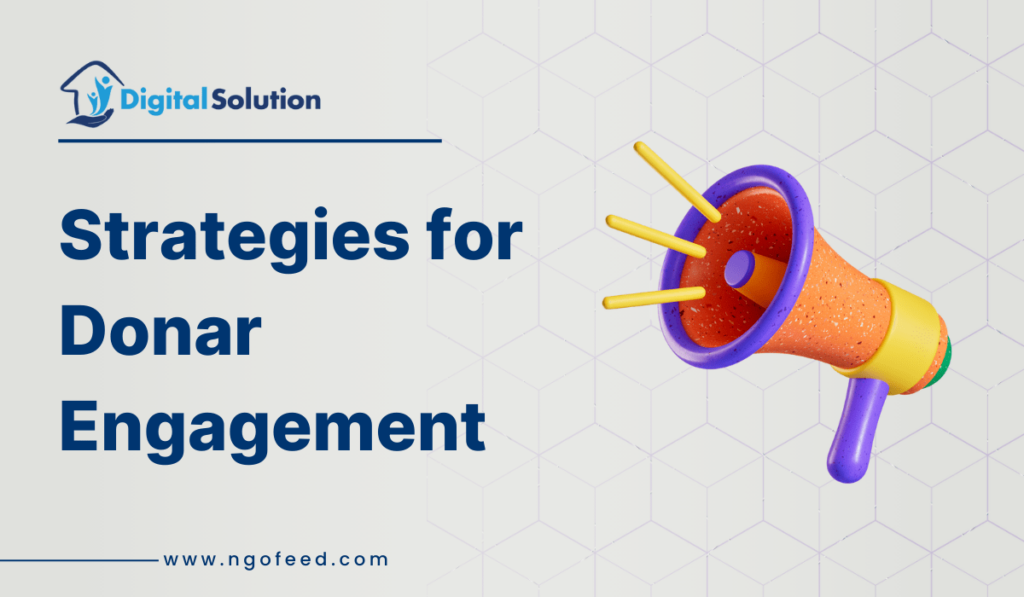Strategies For Donor Management: Donor management involves acquiring, engaging, and retaining donors to ensure sustained support for a cause. Campaigns and outreach are the first steps in bringing in new donations. To establish confidence, regular correspondence through emails, newsletters, and customized messaging comes next. Using CRM solutions to organize donor data makes it easier to manage contributions and customize interaction tactics. Donor loyalty is increased by fortifying ties through impact reports, thank-you notes, and invitation-only events.
Additionally, by examining donation trends, organizations can improve their fundraising tactics for sustained success. Managing donors well optimizes contributions and creates enduring relationships.
Nonprofit development teams work toward four top-level donor management objectives:
- Acquire new donors.
- Retain current donors.
- Recapture lapsed donors.
- Increase the lifetime value of donors.
Table of Contents
Also Read: How to Use Social Media to Recruit Volunteers
How Donors Can Help Make an Impact?
Donors can help by providing financial support, in-kind donations, or volunteering their time to causes they care about. Financial contributions fund essential programs, while in-kind donations- such as food, clothing, or medical supplies- directly support beneficiaries.
Many donors also offer expertise or mentorship, assisting organizations beyond monetary aid. Engaging in fundraising, spreading awareness, and advocating for a cause further amplifies their impact.
By staying informed, participating in donor programs, and fostering long-term relationships with organizations, donors ensure sustained and meaningful change.
Also Read: Viral Nonprofit Campaigns for Optimal Impact
Tips – Strategies For Donor Management
The foundation of nonprofit organizations is their donors, who give them the financial security they need to continue and grow their mission-driven work. They increase an organization’s reach and influence by providing networks, advocacy, and expertise in addition to financing.
Nonprofits can plan long-term projects, come up with creative solutions, and react quickly to emergencies when they get consistent donor funding. Additionally, engaged contributors increase trustworthiness, which draws in more partners and supporters.
Recurring contributions also lessen reliance on grants, freeing up NGOs in India to concentrate on effect rather than ongoing fundraising. Their participation ensures long-lasting social transformation by building a strong community.
Also Read: Engaging Gen Z in Philanthropy for Nonprofits
How Fundraising Intelligence Powers It?
Once you have a donor management system, such as a CRM, the next level is getting results in areas like online fundraising and fundraising campaigns.
That means going from data to intelligence. So what is fundraising intelligence? Fundraising intelligence is the processes and systems which provide nonprofits with information on the affinity, capacity, and inclination of prospective and current donors.
This information is assembled into a prospect’s score, which is customized specifically to your organization. Pretty neat, right?
When you choose a donor management system, you should be able to gain fundraising intelligence that allows you to:
Also Read: Tips for Building Long-Term Relationships with Donors
- Prioritize prospects based on scores and ratings for propensity, affinity, and capacity to give
- Cross-reference any contact with billions of wealth, biographic, and philanthropic records
- Score and segment hundreds of records at once with batch scoring right from Salesforce
- Improve your communication with prospects and donors by understanding their complete profile
- Generate comprehensive scores for any prospect or donor—all within the contact record
Stages – Strategies For Donor Management in Nonprofits
- Awareness: Potential donors discover the nonprofit through campaigns, events, or word-of-mouth.
- Interest and Consideration: They research the cause, evaluate its impact, and decide whether to contribute.
- Initial Donation: The donor makes their first contribution, testing their engagement with the organization.
- Engagement and Relationship Building: Regular updates, personalized communication, and impact stories strengthen their connection.
- Recurring Support: Donors commit to regular contributions, volunteer work, or advocacy efforts.
- Major Giving and Leadership: Some donors transition to high-impact giving, fund specific programs, or join advisory boards.
Also Read: Financial Management Tips for NGOs
Key Components in Strategies for Donor Management
Clear communication and collaboration:
- Schedule regular meetings with all stakeholders involved in the grant program or project to ensure everyone is on the same page and working towards the same goals.
- Use a project management tool or software that allows for real-time collaboration and updates among team members.
- Develop a communication plan that outlines the communication channels, frequency, and expectations for all stakeholders.
2. Regular monitoring and evaluation:
- Establish key performance indicators (KPIs) to measure progress and success. This can include metrics such as project completion rate, impact on beneficiaries, and financial performance.
- Conduct regular site visits to assess project progress and identify any issues or challenges.
- Develop a monitoring and evaluation plan that outlines the data collection process, data analysis, and reporting requirements.
Also Read: How to Choose the Best Crowdfunding Website
3. Transparency and accountability:
- Develop a financial reporting system that provides regular updates on grant expenditures, cash flow, and financial performance.
- Be transparent about how donor funds are being used by providing regular updates on project progress and performance.
- Establish a system of checks and balances to ensure compliance with grant terms and conditions, accounting standards, and regulatory requirements.
Also Read: How to Start a Marketing Campaign for Nonprofits
Conclusion
Effective donor management is all about relationships- building them, growing them, and maintaining them for years to come. You now have the resources necessary to build better donor relationships, create meaningful connections, and foster a strong donor community.

